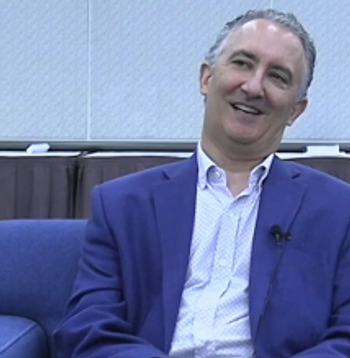
Social Misuse of Disorder Designation, Part I: Conceptual Defenses
Part 1 of a three-part series on a pertinent philosophical question in the era of diagnostic inflation: What conceptual means are available to prevent deviant and undesirable behavioral conditions from being diagnosed as mental disorders as a result of social bias and stigma?
Dr Aftab is a geriatric psychiatry fellow at University of California San Diego in La Jolla, CA, and a former psychiatry resident at Case Western Reserve University/University Hospitals Cleveland Medical Center in Cleveland. He is also a member of the Psychiatric Times Advisory Board. He can be reached at awaisaftab@gmail.com.
This is Part 1 of a three-part series on a pertinent philosophical question in the era of diagnostic inflation: What conceptual means are available to prevent deviant and undesirable behavioral conditions from being diagnosed as mental disorders as a result of social bias and stigma? This series is based on an essay (“Social Misuse of Disorder Designation: Exploring Dysfunction and Harm-Based Conceptual Defenses”) that was awarded the 2018 Karl Jaspers Award by the Association for the Advancement of Philosophy and Psychiatry. Dr Aftab has been actively involved in initiatives to educate psychiatrists and trainees on the intersection of philosophy and psychiatry, and this series constitutes one effort to bring this discussion to a wider audience.
Consider a hypothetical society that severely marginalizes individuals with red hair and considers red hair to be a genetic disorder with a recessive pattern of inheritance. The “pathology” is determined to be an imbalance between the levels of the red pigment pheomelanin and dark pigment eumelanin in the hair filaments. Red-haired individuals-and parents of red-haired children-in this society go to extreme lengths to dye their hair black. In fact, this society has spent extensive resources to develop complex dyeing procedures, performed only by specially trained medical professionals, that work best for red hair and last longer than regular dyes.
Variants of this thought experiment are sometimes utilized in the gene-environment debates1; for gene-environment theorists, the thought experiment provides a scenario in which a socially sanctioned phenotype leads to reduced biological fitness solely because of that sanction. However, I utilize this scenario to explore a different question. The disorder designation in this case is entirely arbitrary on part of the society. There is nothing inherently pathological about red hair. The designation is arbitrary in this case because any hair color, if stigmatized, could have been regarded as a disorder. Disorder designation is one of the ways in which this stigma is expressed, although possibly a relatively humane way, since disorder designation recognizes that the condition can potentially be fixed with a treatment (in this case, hair dyeing), and treatment may lead to alleviation of the social exclusion.
We do not have to come up with thought experiments to confront situations like these. There are already instances of such in the history of psychiatry, with homosexuality being the prime example. While we now recognize homosexuality as a normal sexual variant similar to heterosexuality, homosexuality was severely stigmatized in Western societies in the past. Over time, the religious and moral sin of sodomy was transformed into the medical notion of homosexuality. Homosexuality was believed by many in the 18th and 19th century to be a congenital disease. In fact, many physicians considered all non-procreative sexual behaviors, masturbation included, as psychopathological. The pathological view of homosexuality further evolved with psychoanalysts, who theorized various sorts of psychopathology within the analytical framework.
In 1973, after prolonged controversy, the American Psychiatric Association declassified homosexuality as a disorder. Yet the APA continued to consider ego-dystonic homosexuality a disorder until 1987.2 Ego-dystonic homosexuality is the case where homosexual feelings, fantasies, or behavior generate distress in the individual because they are at odds with the individual’s desired heterosexual orientation. When the APA voted to exclude homosexuality from the DSM, it created the new category of ego-dystonic homosexuality. This category met the DSM-III definition of mental disorder by virtue of the individual experiencing distress and because of the practical reason that these individuals were seeking treatment and were being treated by psychiatrists.
We can draw the pessimistic conclusion from the history of erroneous disorder designations that a society will utilize whatever tools are available to stigmatize a negatively valued condition, including the tool of disorder designation. In retrospect, the pathologization of homosexuality was as much driven by stigma as is the pathologization of red hair in our thought experiment, and the distress experienced by ego-dystonic homosexuals was a result of internalization of social values. I begin with the red hair thought experiment to illustrate that the issue of the validity of disorder designations relates to “disorder” as a medical concept and is not restricted to the psychiatric subset, even though I will focus my attention on the latter.
With this background, these are the central questions that will occupy us in this series: In the domain of mental health, what conceptual means are available to us to restrict the ability of a society to arbitrarily designate negatively valued behavioral states as mental disorders? Can we define mental disorder in a manner that would prevent social misuse of disorder designation?
Social misuse of disorder designation is related to, but different from, the issue of involuntary treatment. Our response to the question of coercive treatment has been based on discussions of ethical boundaries of personal autonomy, and Western societies have developed elaborate laws to determine under what circumstances it is acceptable for us to override someone’s refusal of treatment. Preventing abuse of treatment, however, does not prevent abuse of disorder designation. Preventing involuntary treatment of homosexuality does not by itself prevent homosexuality from being labelled as a disorder.
The Ego-dystonic homosexuality litmus test for mental disorder definition
Most people in contemporary psychiatry would say that it is wrong to call homosexuality a disorder. This can be understood in two ways. The first sense is factual: By calling homosexuality a disorder, we are making an error regarding a matter of fact. The second sense is ethical: It is morally wrong to call homosexuality a disorder. To say that we are making an objective, scientific error is to say that this disorder designation lacks conceptual validity. To say that it is unethical to label homosexuality as a disorder is to say that it lacks ethical validity. The two ways are complementary and not mutually exclusive, but one may be better suited that the other in the defense against social misuse of disorder designation.
What is mental disorder?
An extended body of literature analyzing the notion of disorder in medicine suggests that disorder designation utilizes two kinds of judgments.4-6 These notions can be descriptive (ie, describing the current state of affairs) as well as prescriptive (ie, how we should define disorders). From a descriptive stand point, I will simplify these judgements as follows:
1. Some process is “abnormal” or “not functioning right” within the individual;
and
2. It is undesirable, unwanted, disadvantageous or harmful in some way.
The first criterion is usually referred to as dysfunction. The second criterion is often captured by the term harm in discussions, but I am using the broader term undesirability as a starting point. The essence of undesirability is that the condition is unwanted in some sense, and it provides individuals in a society with a reason for treatment. Psychiatric manuals often refer to specific instances of undesirability, generally the presence of distress or impairment for the individual (and implicitly, harm posed to others).
Defining mental disorder
A philosophically satisfactory definition of mental disorder remains an unaccomplished challenge.
DSM-5 defines mental disorder as follows8:
A mental disorder is a syndrome characterized by clinically significant disturbance in an individual’s cognition, emotion regulation, or behavior that reflects a dysfunction in the psychological, biological, or developmental processes underlying mental functioning. Mental disorders are usually associated with significant distress or disability in social, occupational, or other important activities.
DSM’s preventive strategy: dysfunction
All editions of DSM from III to 5 explicitly state, with some variation of words, that deviance or conflict between individual and the society is not mental disorder per se; deviance or conflict elevates to the level of a mental disorder if it is a product of a dysfunction in the individual. This is the statement in DSM-5: “Socially deviant behavior (eg, political, religious, or sexual) and conflicts that are primarily between the individual and society are not mental disorders unless the deviance or conflict results from a dysfunction in the individual.”8
DSM recognizes the need to prevent arbitrary disorder designation of negatively valued conditions and does so by adopting a dysfunction-based defense. However, a dysfunction-based defense against misuse of disorder designation has serious conceptual deficiencies, is vulnerable to social biases, and offers very little protection in practice. In
The author acknowledges Jeanne Lackamp and Susan Stagno at Case Western Reserve University/University Hospitals Cleveland Medical Center, both of whom reviewed early drafts of this manuscript and offered valuable feedback.
References:
1. Matthewson J, Griffiths PE.
2. Drescher J.
3. Bingham R, Banner N.
4. Bolton D. What is Mental Disorder?: An Essay in Philosophy, Science, and Values. Oxford, United Kingdom: Oxford University Press; 2008.
5. Brülde B.
6. Wakefield JC.
7. Brulde B.
8. APA. Diagnostic and statistical manual of mental disorders. 5th ed. Arlington, VA: American Psychiatric Association; 2013.
Newsletter
Receive trusted psychiatric news, expert analysis, and clinical insights — subscribe today to support your practice and your patients.

















